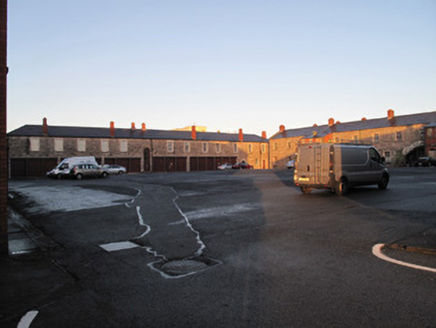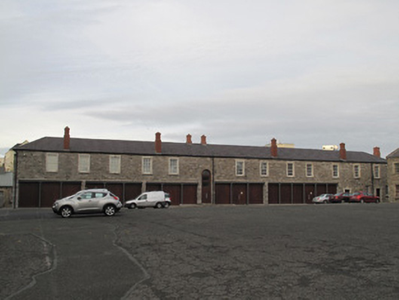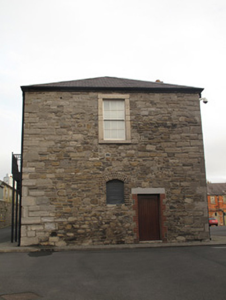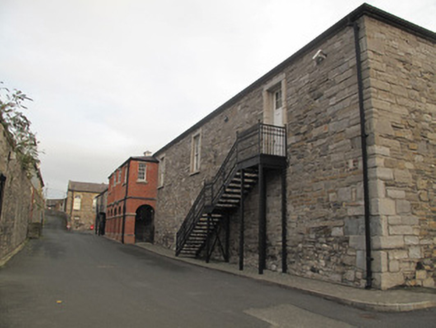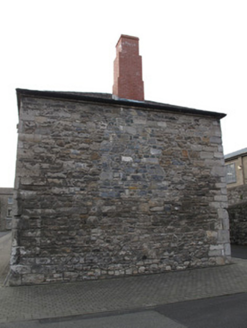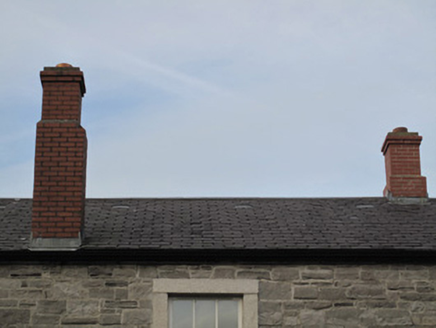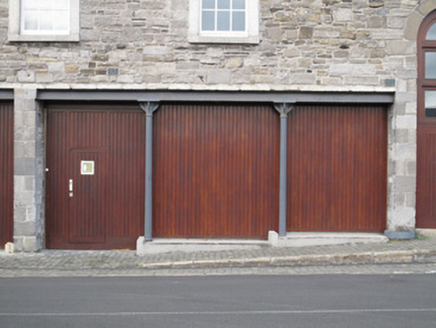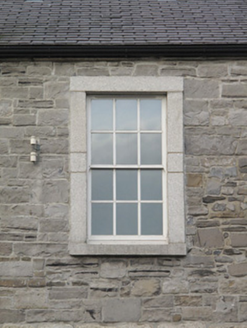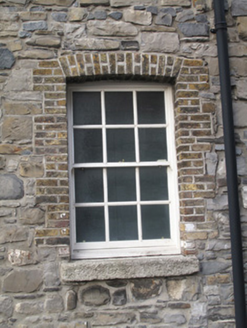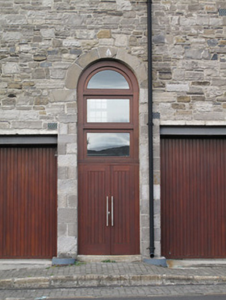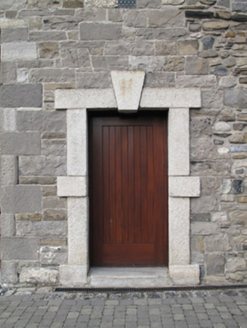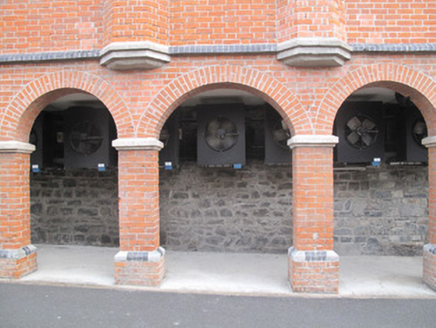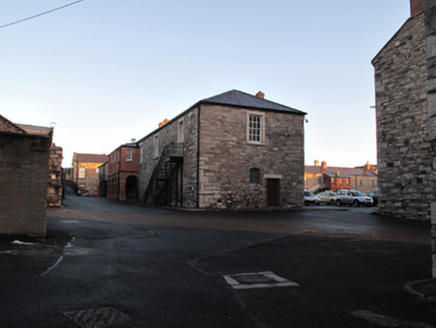Survey Data
Reg No
50070168
Rating
Regional
Categories of Special Interest
Architectural, Historical, Social
Previous Name
Horse Square/Transport Square/Royal Barracks
Original Use
Barracks
Historical Use
Stables
Date
1820 - 1830
Coordinates
313965, 234526
Date Recorded
14/11/2012
Date Updated
--/--/--
Description
Detached thirteen-bay two-storey barracks, built c.1790, rebuilt c.1825, having toilet block extension to rear (west) elevation built c.1900, having oriel windows. Now disused. Hipped slate roof with red brick chimneystacks and granite eaves course. Rubble calp limestone walls having dressed block-and-start quoins. Red brick, laid in Flemish bond, to extension to rear, with black brick string course over ground floor, arcade comprising round-arched openings having red brick voussoirs and granite and black brick detailing to piers. Square-headed open front to front (east) elevation, cast-iron columns with girders supporting upper wall, recent timber battened panels to wall. Square-headed window openings, granite sills, surrounds and six-over-six pane timber sash windows. Segmental- and square-headed window openings with red brick voussoirs, surrounds, granite sills and six-over-six pane timber sash window or timber louvered vent. Square-headed door openings having dressed granite surrounds and recent doors, door openings at first floor level to rear with overlights, accessed via cast-iron fire escape. Round-arched double-height door opening to front with dressed calp limestone voussoirs and surround, recent timber door and overlights.
Appraisal
The construction of the Royal Barracks was initiated by the 2nd Duke of Ormonde at the close of the seventeenth century, and was funded by a tax on tobacco and beer. Such a large scale residential barracks was an entirely new concept, and until the departure of the Irish Army from the site in the twenty-first century, it was considered the largest and oldest occupied barracks in Europe. This block formed the west range of Horse Square, one of a series of stable blocks, which was built towards the close of the eighteenth century to the rear of the original ‘Horse Square’, subsequently renamed Cavalry Square. The square was rebuilt c.1825 and became known as ‘Transport Square’, with open-fronted facades to this and the west range, the upper walls supported on cast-iron columns. Its construction and extension is indicative of the continuous use and expansion of the Royal Barracks. The form and fabric of the building is characteristic of a military structure, and mimics the design of the building opposite, creating a strong sense of uniformity which is enhanced through the use of rubble calp limestone to the walls and granite detailing.
